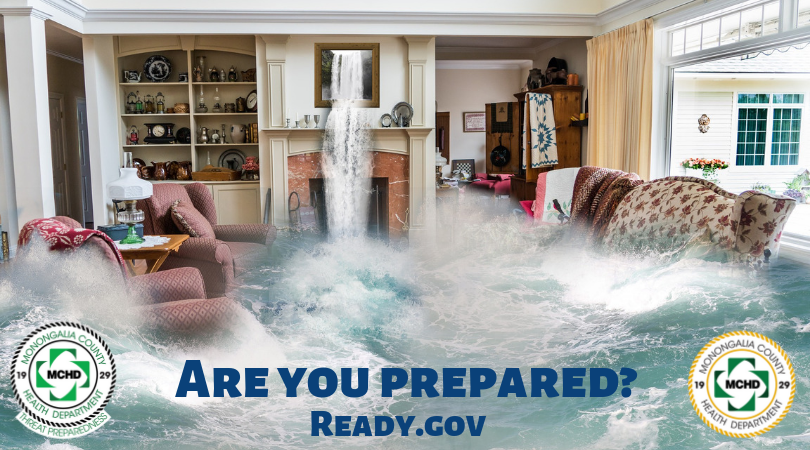Are you ready? National Preparedness Month provides a road map to help.

Sep. 4, 2019
By Mary Wade Burnside
Hurricane season runs from June 1 to Nov. 1 but lately, it seems to pick up right around National Preparedness Month, which began on Sunday.
We’re still waiting to see how the ever-changing Hurricane Dorian, which reached category 5 as it devastated the Bahamas and now has started its way up the East Coast starting with Florida and Georgia.
It does appear the West Virginia will be spared potentially flooding post-hurricane rains that sometimes result, such as with 1985’s Hurricane Juan.
Two years ago, we watched as Houston dealt with massive flooding in the wake of Hurricane Harvey.
The question Monongalia County Health Department’s Threat Preparedness poses not only at this time of year but also anytime we discuss potential crises is: Are you ready?
To brush up on what you can do to be prepared, the U.S. Department of Homeland Security has compiled a thorough website, Ready.gov, that you can review to figure out your level of readiness.
And that can be for a variety of situations, not just disasters, that you want to make preparations for. Such as losing power in your home.
What did you do? Did you have enough flashlights so you could make your way around the house? And even though you knew the power would come back on eventually, did you wonder if it would be out long enough to disrupt your plans? Would your food last in the refrigerator? How would you get ready for work without power? Does a family member require supplemental oxygen that runs on electricity?
Those situations make you realize you want to be better prepared in the future.
Ready.gov has divided September into four main points of emphasis. The first one—make and practice your plan—hits close to home. Let’s examine steps you can take now to make life easier if something happens.
First, consider how you might learn about a disaster or some other incident.
In this day and age of cell phones and a 24-hour news cycle, this is easier than ever. Also available is IPAWS, or the Integrated Public Alert and Warning System that was developed in the aftermath of Hurricane Katrina. IPAWS can deliver a Wireless Emergency Alert (WEA) via a 90-character text to mobile devices in case of emergency. The WEA will tell you the type of alert and what you should do in response.
If you use social media, you probably know that Facebook and Twitter are great ways to find out what is going on in your community. You can follow key pages, including those of local media, the city of Morgantown, and, of course, Monongalia County Health Department. We post updates almost daily on health news in the area and that would be ramped up in an emergency.
You can also follow the social media of your local neighborhood associations. This is a great way to meet neighbors, which could be even more vital down the road during an incident. There are also apps such as Nextdoor. You can download it to your smartphone and get alerts about lost cats, power outages or worse.
Next, make a plan for your family. Do you have a shelter plan? What items would you need if you couldn’t leave home for a few days? This is where having an emergency kit comes in handy. It should include food and water for everyone in your household—including pets—to last three days. Count on a gallon of water per person per day.
Other items should include a first aid kit, battery-powered radio and flashlights as well as plenty of batteries for both, moist towelettes and garbage bags for personal sanitation, wrench or pliers to turn off utilities, a manual can opener for food, a local map and a cell phone plus charger and a back-up battery plan.
There is a lot more information on preparedness at Ready.gov. It’s not fun to think about disasters, whether due to weather, power outages or a violent incident. But there is peace of mind knowing that you are prepared for the worst while hoping for the best.
Mary Wade Burnside is the public information officer for Monongalia County Health Dept.